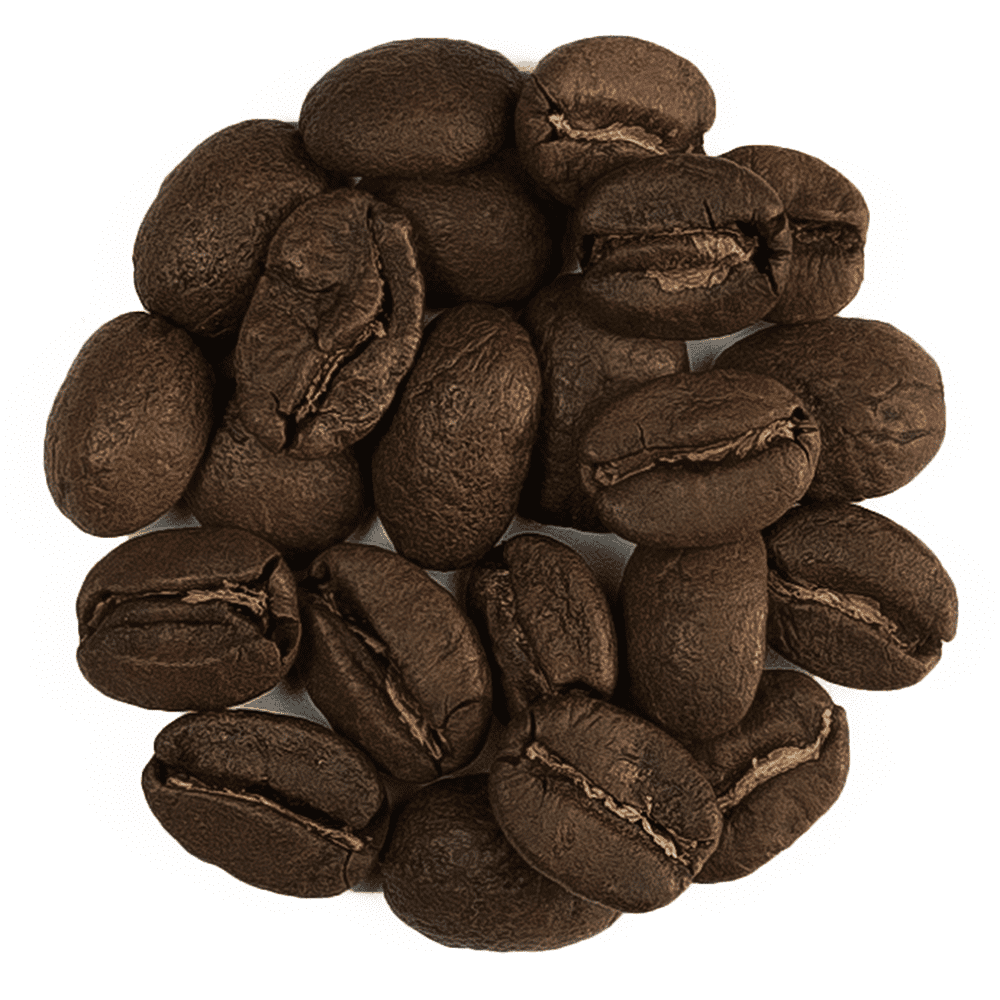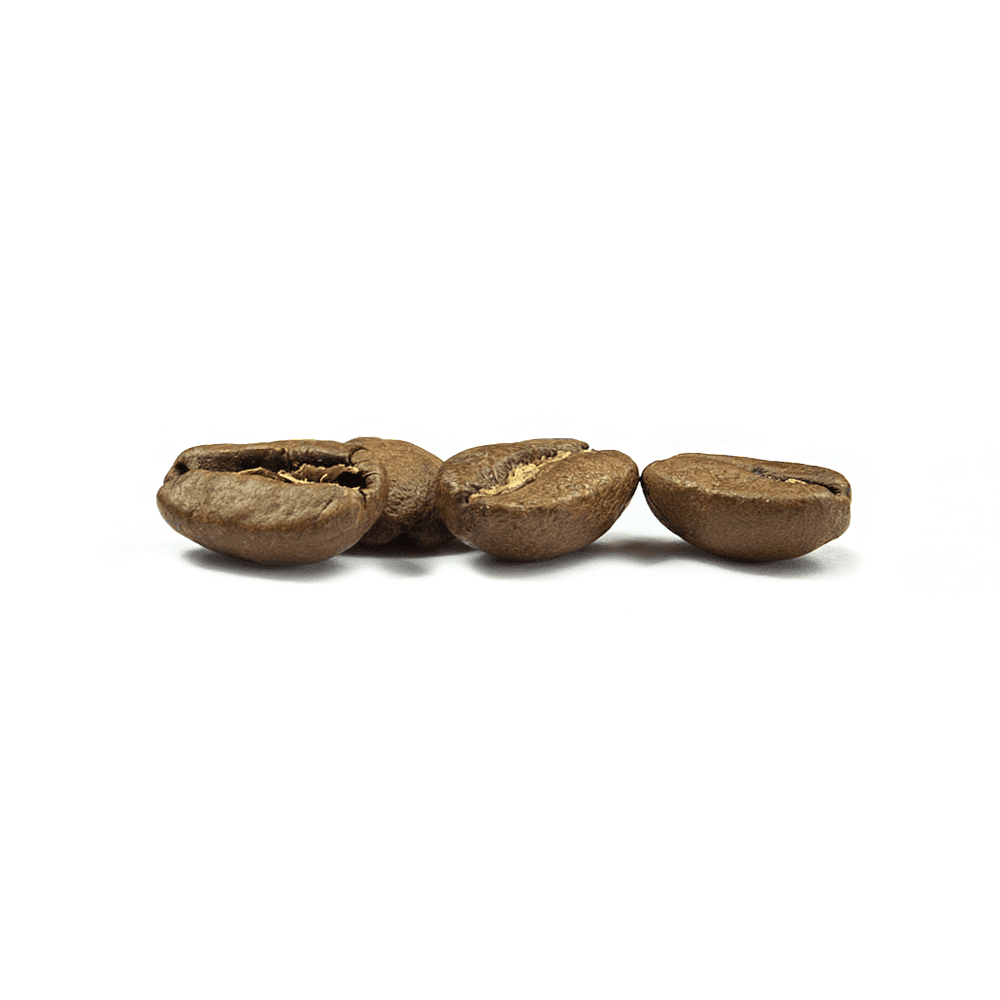Coffee Brewing Guide
Cafetiere / French Press
Use one tablespoon of cafetiere ground coffee per mug, or per 125ml of hot water. Allow to brew for 2-3 minutes.
Coffee Filter / Drip
Add a tablespoon of medium ground coffee per mug, pour hot water over the filter and allow it to drip through.
Espresso Machine
Add espresso fine ground coffee and press the coffee into the portafilter. Attach it to your machine and start extracting.
About Product
-
Product Description
Colombia is to Coffee what China is to Tea and France is to wine: arguably the best of the best. Such is the case with our Colombian Coffee, a medium-roasted delight of the finest quality.
This deep, rich, invigorating beverage offers a well-balanced flavour with sweet undertones. It is, unmistakably, one of our most popular varieties. You can discover why today.
History of Colombian Coffee
Colombian coffee has a long and interesting history that goes back to the 18th century. Coffee was first introduced to Colombia by Jesuit priests who brought the beans from the Caribbean islands.
The mountainous and fertile land of Colombia was the perfect place for coffee growing and producing high quality beans with unique flavors. The coffee industry started to take shape in the mid 19th century when commercial production started to spread to regions like Santander and Cundinamarca.
By the end of the 19th century coffee was one of Colombia’s main exports and a big contributor to the economy. Another interesting fact of Colombian coffee history is the creation of the National Federation of Coffee Growers of Colombia in 1927.
Which has been in charge of marketing Colombian coffee worldwide, and keeping the high standards that Colombian coffee has today.
Colombian Coffee Crop
Columbia, this South American country, is the world’s third largest coffee producer, with approximately 12 % of the coffee only after Brazil and Vietnam. This is about 810,000 tonnes made every year where most coffee is grown between 1,000 and 2,000 metres above sea level.
Such height gives a unique zestiness to Colombian coffee which many aficionado appreciates. The specific hot-cold topography of Colombia due to its hilly areas and volcanic land helps in fruitful growth of single origin coffee beans. They are selected and it is a labour of love for the growers, so only the best coffee will be in your cup.
Due to the area’s climate, altitude, and soil, coffee beans distinguish themselves by their flavor – smooth and full bodied coffee with citrus and floral notes. Hence Colombian coffee has found it’s way in the hearts of all coffee lovers and should be a showcase of mother nature’s beauty along with some tradition in making good coffee.
Moreover, the Colombian coffee sector is grounded on sustainability as well as ethical values. A major percentage of Colombian coffee farmers belong to fair trade cooperatives, offering assistance in terms of pricing and working conditions. Their efforts towards sustainability helps not only the farmers but also help conserve the rich biodiversity and the natural beauty of Colombia.
Colombian Coffee Farms
Coffee farms in Colombia, often referred to as “fincas,” are typically family-owned operations that have been passed down through generations, preserving traditional growing methods. These farms span the richly fertile regions known as the “Coffee Triangle”—the departments of Caldas, Quindío, and Risaralda.
Its smooth, mild flavor profile characterises Colombian coffee, with a well-balanced acidity and rich aroma, attributes that can be traced back to both the selective harvesting of ripe cherries and the meticulous processing of beans.
Many coffee farms in Colombia are also engaged in sustainable and organic farming practices, ensuring the quality of the coffee while protecting the environment. Visitors to these farms often experience guided tours, gaining insights into the coffee production process from plant to cup, which highlights the meticulous care and passion farmers invest in their craft.
How to Make Colombian Coffee
For coffee enthusiasts who appreciate rich, flavorful brews, Colombian coffee stands out due to its smooth taste and aromatic profile. Here, we provide straightforward instructions for making Colombian coffee using three different methods: Espresso Machine, Cafetiere,
and Drip Coffee Maker. Follow these steps to enhance your coffee experience.
Espresso Machine
- Prepare the Machine: Ensure your espresso machine is clean and filled with fresh, filtered water. Preheat the machine by running a shot of hot water through it.
- Grind and Measure the Coffee: Use a burr grinder to grind Colombian coffee beans to a fine consistency. Measure approximately 18-20 grams of coffee for a double shot.
- Brewing: Tamp the ground coffee into the portafilter and attach it to the machine. Start the machine, allowing about 25-30 seconds for the espresso to brew, resulting in a rich, crema-topped shot.
Cafetiere (French Press)
- Boil Water: Bring filtered water to a boil. Once boiling, let it cool for about 30 seconds to reach the optimal temperature of around 200°F (93°C).
- Measure and Add Coffee: Coarsely grind Colombian coffee beans and add 2 tablespoons for every 6 ounces of water. Place the ground coffee at the bottom of the Cafetiere.
- Steep and Press: Pour the hot water over the coffee grounds, stir gently, and place the lid with the plunger on top. Allow the coffee to steep for about 4 minutes, then slowly press the plunger down to separate the grounds from the liquid.
Drip Coffee Maker
- Set Up the Machine: Ensure your drip coffee maker is clean. Fill the reservoir with fresh, filtered water.
- Grind and Place the Coffee: Grind Colombian coffee beans to a medium grind. Use 1-2 tablespoons of coffee per 6 ounces of water, and place the coffee grounds in a paper or reusable filter.
- Brew: Turn on the machine and let it complete the brewing cycle. Enjoy your freshly brewed Colombian coffee.
These methods allow you to experience the unique qualities of Colombian coffee, whether you prefer the intensity of espresso, the robust body of a French Press, or the convenience of a drip coffee maker.
What Does Colombian Coffee Taste Like?
Due to its distinctive flavor and relatively balanced acidity, Colombian coffee is perhaps the most popular in the world. It’s often described as rich in flavor with a strong acidity and a sweetness that contains hints of fruits like cherries and metal, with a nutty undertone. In addition, the fruity notes combine magnificently with the nutty aroma.
On the other hand, Colombian coffee also has caramel or chocolate notes that provide a comforting complement to the coffee’s bright notes. Its distinct taste is due to the country’s extra care for batch processing and distinct growing conditions, making it ideal and distinctive for coffee lovers.
Colombia’s different ranges of temperatures and climates, heights also help in adding flavor to the Colombian coffee. The higher the altitude, the slower the coffee cherries ripen therefore the more concentrated the flavors are. The coffee plants also benefit from essential minerals contained in volcanic soil which gives the coffee its taste.
Also, being a coffee-growing country, Colombia has impressive history, culture and tradition surrounding this crop. Each sip of Colombian coffee is imbued with such passion and knowledge that it makes the Colombian coffee a benchmark of quality to coffee lovers around the world.
Summaries
There are many unique features of Colombian coffee such as their rich aroma, favour and smoothness, which can be seen to stem from the farming methods and processing techniques used. For instance, one can make Colombian coffee with an espresso machine, a Cafetiere (French Press) or a drip coffee maker.
Using any of these techniques allows one to sample a different aspect of the coffee which helps appreciate its unique taste. Colombian coffee is creamy and nutty in flavor, and mild and fruity in acidity.
In these methods, one can moderate their coffee strength due to differences of caffeine levels between the methods as well as the degree of roast, and still appreciate the great taste of the coffee. With all this in hand, why not try to make your own cup of Colombian coffee?
-
Delivery Information
We offer reliable delivery services through Royal Mail to ensure that your orders reach you on time.
Here are the main points you should be aware of:
- Standard UK Delivery: £3.95 excluding delivery charge.
- Delivery Times: Orders are processed and dispatched within 2-5 working days but they may take longer during busy times. It is worth noting that all our orders are packed by hand in order to maintain the quality.
- Free Delivery: We are delighted to provide free shipping for UK orders over £35*. Moreover, customers from Europe can enjoy free shipping for any purchase above €75*. Furthermore, we offer free delivery in the USA for all purchases exceeding $125*. Please note terms and conditions may apply.
- Tracking: When your package is sent you will receive a tracking number via email so as to keep tabs of its progress.
International Shipping
We do ship worldwide meaning our products can be accessed by anyone around the world.
Here are some important details:
- Delivery Times: International deliveries vary based on destination, generally taking between 7-14 working days.
- Shipping Costs: International shipping costs are calculated at checkout based on your location and weight of your order. View full delivery charges for your location.
- Customs and Import Duties: Remember customs or import duties may exist depending on regulations in your country; these charges are borne by the customer.
Returns Policy
Your satisfaction is our top priority, however if for any reasons you’re not completely happy with your purchase, simply follow our returns procedure:
- Eligibility: Items returned within 30 days of receipt must remain unopened and in their original condition.
- Process: In order to return an item contact our customer service department using your unique order number after which detailed instructions will be given concerning returning them back to us securely.
- Refunds: Our aim is to refund you within 5-7 working days upon successful reception of returned goods. The refund amount will be credited to your original payment method.
For any other Enquiries or help please contact our Customer Support Team always at your service.
-
Product Reviews

